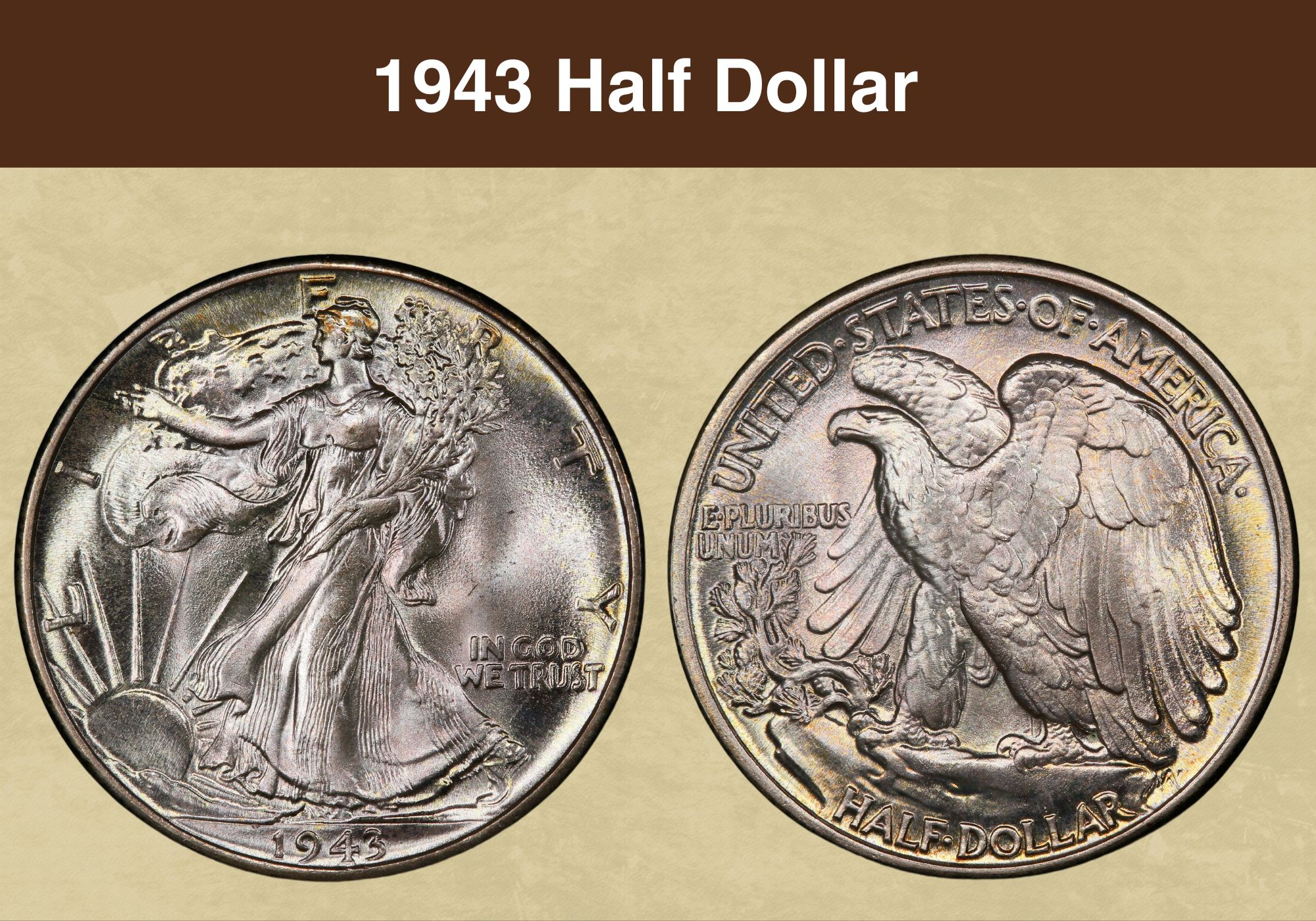
Coin Value Contents Table
- 1943 Half Dollar Value Chart
- History of the 1943 Half Dollar
- Features of the 1943 Half Dollar
- 1943 Half Dollar Grading
- 1943 Half Dollar Value Guides
- 1943 no Mint Mark Half Dollar Value
- 1943 D Half Dollar Value
- 1943 S Half Dollar Value
- Rare 1943 Half Dollar Error List
- Where to Sell Your 1943 Half Dollar ?
- FAQs
If you’ve found a half dollar dated 1943, you’ll probably have noticed it’s a very attractive coin. But is it valuable too?
The short answer is – it depends! We’re going to look at all the factors that play a part in determining the 1943 half dollar value. We’ll investigate condition, mint marks and errors. And we’ll explore the history and design of this interesting coin along the way.
So if you’re ready to learn more, let’s get started!
1943 Half Dollar Value Chart |
||||
| Mint mark | XF45 | MS60 | MS65 | MS67 |
| 1943 (P) No Mint Mark Half Dollar Value | $24 | $55 | $165 | $675 |
| 1943 D Half Dollar Value | $24 | $55 | $190 | $675 |
| 1943 S Half Dollar Value | $24 | $55 | $225
Prooflike: $1,050 |
$8,250 |
History of the 1943 Half Dollar
The coins known as “Walking Liberty” half dollars were first struck in 1916. They get their nickname from the design on the “heads” side, the obverse. This shows a full-length portrait of an elegant Lady Liberty striding out, the sun rising in the background.
The coins were redesigned alongside dimes and quarters. But the wholesale reimagining of the three denominations was the result of a misunderstanding by the US Mint.
Robert D. Woolley, the director of the Mint at the time, believed that the law required coin designs to be replaced after 25 years of use. But in fact, the law simply gave the Mint the power to change coin designs after that period, without the approval of Congress.
Woolley duly invited the Mint’s engravers to come up with new designs. But he wasn’t satisfied with the results, and decided to launch a competition for new ideas.
The artist who won the commission to design the half dollar was the renowned engraver, Adolph A. Weinman. And Weinman’s design was also selected for the dime.
The Walking Liberty half dollar is generally considered one of the most beautiful of all US coins. But while its artistic merit isn’t in doubt, striking it effectively proved very difficult.
The early coins caused difficulties for vending machines, and production had to be stopped. Weinman suggested some minor changes to his design, but the problems persisted.
The Mint’s Chief Engraver, Charles E. Barber, felt that more radical revisions were needed. Barber was the man who had designed the half dollars Weinman’s design would be replacing. And his designs for the new coins had not found favor with Woolley.
It wouldn’t be surprising, then, if Barber felt a little aggrieved. The revisions he proposed to Weinman’s half dollar were dramatic. The design, Barber felt, should be shrunk to leave more blank space around the edge. And it should be surrounded with a beaded border.
Weinman objected to the changes, arguing that they diminished the coin’s esthetic appeal. A third way was proposed by the superintendent of the Philadelphia Mint facility, Adam M. Joyce.
Joyce believed the problems could be solved by lowering the relief of Weinman’s design. That, he argued, together with a stronger strike and more thorough preparation of the planchets, would do the trick.
In the end, Joyce’s view prevailed. But Barber must surely have felt vindicated when the production problems continued.
Weak strikes are a recurring problem for Walking Liberty half dollars, particularly for those struck at the San Francisco Mint facility. It was probably this that accounted for the decision to replace the design with the Franklin half dollar in 1948.
Also read: 13 Most Valuable Franklin Half Dollars Worth Money
Features of the 1943 Half Dollar
The Obverse of the 1943 Half Dollar
The obverse of the 1943 half dollar carries the image of Lady Liberty striding in front of a rising sun. She is wrapped in the Star-Spangled Banner, and carries an olive branch in her left hand. Her right hand is stretched out before her.
There’s no trace of the blank area around the image that had been proposed by Barber. Instead, the portrait covers almost the whole of the coin face, leaving little room for anything else.
Weinman had originally proposed that the word “LIBERTY” should be placed to the right of the portrait. That would allow the figure of Liberty to take up the whole height of the coin.
But in the final design, the word is tucked up against the upper coin edge. Liberty herself, however, still dominates. The lower parts of the letters “B”, “E” and “R” are lost behind her head and the flag.
The motto “IN GOD WE TRUST” is inscribed in small font, tucked behind her right leg. And the date is inscribed on the horizontal, at the very bottom of the coin.
If a half dollar was struck at the Denver or San Francisco Mint facilities, it will have a mint mark. On the first Walking Liberty half dollars, this was placed below the date. It was moved to the reverse in 1917, however, and remained there for the 1943 mintage.
The Reverse of the 1943 Half Dollar
Just as with the obverse, the design on the reverse of the 1943 half dollar is the work of Adolph Weinman. And it’s a celebration of emblems of the USA.
In the center, a bald eagle stands, wings raised, on the edge of a rocky outcrop. Just below it, a branch of mountain pine juts out from the cliff face.
To the left of the bird is the Latin motto “E PLURIBUS UNUM”. It means “From the many, one”, and refers to the individual states coming together to create the USA.
Arching to follow the top edge of the coin is the country name. The denomination is along the lower edge. And if you look closely just along from the letter “R”of “DOLLAR”, you’ll see Weinman’s initials.
Other Features of the 1943 Half Dollar
The half dollar minted in 1943 weighs 12.5 grams and measures 30 millimeters in diameter. The weight and dimensions remain consistent throughout the Walking Liberty series.
It’s commonly referred to as a silver coin, and indeed, it’s composed mostly of silver. 10 per cent by weight, however, is copper.
Turn the coin on its side, and you’ll see a series of grooves running at right angles to the coin faces. These are known as “reeds”, and they’ve been used since the eighteenth century to combat fraud.
The reeds are formed by the collar as it holds the planchet in place for striking. And the pattern meant that it was easy to see if a coin had been “clipped” – a sliver of metal removed from the edge.
This YouTube video from Lakehouse Beach shows Walking Liberty half dollars from a range of different mintages.
Also read: 13 Most Valuable Kennedy Half Dollar Worth Money
1943 Half Dollar Grading
| # | Grade |
|---|---|
| 1 | Basal State-1 |
| 2 | Fair |
| 3 | Very Fair |
| 4, 5, 6 | Good |
| 7, 8, 10 | Very Good |
| 12, 15 | Fine |
| 20, 30 | Very Fine |
| 40 | Extremely Fine |
| 50 | About Uncirculated |
| 60 | Mint State |
| 65 | Mint State |
| 70 | Mint State |
Please check our grading guides to know your coin scale, It’s the necessary step to know the exact value of your coin.
Check out now: How to Grade Walking Liberty Half Dollar?
1943 Half Dollar Value Guides
1943 no Mint Mark Half Dollar Value
If your 1943 half dollar doesn’t have a mint mark, that means it was struck in Philadelphia. Look on the reverse, just above the letters “D” and “O” of “DOLLAR”. If there’s no small letter there, you have a Philadelphia coin.
The Philly Mint facility struck just over 53 million half dollars in 1943, accounting for around two thirds of the total. Today, the independent coin graders the PCGS estimate that around 2,750,000 of those coins survive at all grades.
The number of mint state coins, however – those graded at least 60 out of 70 on the coin grading scale – is much smaller. There are around 250,000 of those, and 60,000 “gem” quality coins graded 65 and above.
A coin in the poorest condition can be picked up for less than $20. An example graded “extremely fine”, XF45, is valued by the PCGS at $24. That rises to $55 at MS60, and values breach three figures at MS64.
A gem MS65 coin is worth around $165, while those graded MS67 and above are worth serious money. The PCGS values a half dollar graded MS67 at $675, rising to $2,250 half a point higher.
Just 26 coins have been graded MS68, and they’re worth a hefty $25,000 apiece. And the finest of all are two examples graded MS68+. The PCGS values each of those at a cool $125,000.
1943 D Half Dollar Value
Far fewer half dollars were struck in Denver than in Philadelphia in 1943 – 11,346,000. They can be identified by the small “D” on the reverse, just above the denomination.
The PCGS estimates around 550,000 remain today, with about 90,000 of those in mint state. Gem examples are rarer, numbering perhaps 27,500.
In circulated grades, prices are similar to the Philadelphia half dollars. But the lower mintage means that the “D” mint mark carries a premium at higher grades.
A 1943 Denver half dollar graded MS60 is valued at $55 by the PCGS. That’s 25 per cent more than the Philadelphia equivalent. At MS65, the value for a coin from either location is $190.
The finest examples to have so far come to light are six coins graded MS68. Those are each worth $37,500.
1943 S Half Dollar Value
Almost 13.5 million half dollars came out of the San Francisco coin presses in 1943. But coins with an “S” mint mark have particular problems with weak strikes. In most cases, that results in poor detail on Liberty’s left hand.
That makes it very difficult to find examples at high grades. The PCGS estimates that, of around 650,000 surviving coins, only 50,000 or so are in mint state. And just 7, 500 are graded MS65 or higher.
An example graded MS65 is valued at $225. That’s $50 more than a Denver half dollar at the same grade, and almost $100 more than one from Philadelphia.
Coins graded MS67 are rare, and as a result are valued at a strong $8,250. And the finest examples known to exist are just half a point higher. The dozen coins graded MS67+ are each worth $45,000.
Amongst some of the San Francisco half dollars are a few that are particularly attractive. They’re given the designation “proof-like” by coin grading agencies.
Proof-like 1943 San Francisco half dollars range from MS64 to MS65+. A coin at the bottom of that scale is worth around $600. One at the top end is around $1,100.
Also read: 11 Most Valuable Half Dollars In Circulation
Rare 1943 Half Dollar Error List
1943 D Half Dollar Double Die Obverse
Double die errors occur when there’s movement as the die is struck with the hub. That results in doubling on part of the image. And that doubling is then transferred to the coins struck by the affected die.
Amongst the half dollars struck in Denver in 1943 are some that have doubling on the obverse. Look for it just below Lady Liberty’s chin. This type of Mint error isn’t the rarest – but it does still add a small premium to coin values.
An example of a coin with this error graded MS65 sold at auction for $235. That’s about $35 more than a coin without the error would be expected to make.
1943 S Half Dollar Struck On Peruvian Half Sol Planchet
Very occasionally, a coin is struck on something other than the correct planchet. That happened to one half dollar struck in San Francisco. Instead of the standard silver planchet, it was somehow struck on the planchet for a Peruvian half sol.
This type of error is considerably rarer than doubling – which means collectors are prepared to pay more to acquire examples.
This particular coin was graded MS63 by the coin grading agency, the NGC. And it sold at auction for over $21,000.
This YouTube video from Coin Collectibles shows examples of these and other errors among 1943 half dollars.
Where to Sell Your 1943 Half Dollar ?
Now that you know the value of your coins, do you know where to sell those coins online easily? Don’t worry, I’ve compiled a list of these sites, including their introduction, pros, and cons.
Check out now: Best Places To Sell Coins Online (Pros & Cons)
FAQs
How much is a 1943 half dollar worth today?
That depends on several things. Most important of all is the condition of the coin. At higher grades, the mint mark will also affect its value. And if the coin has an interesting Mint error, that can add a premium to the price.
1943 half dollars in poorer circulated condition are generally worth less than $20. But the better the quality, the rarer and the more valuable they will be. The finest examples are worth tens of thousands of dollars.
Does a 1943 half dollar have silver in it?
Yes, 1943 half dollars are made of 90 per cent silver. The remaining 10 per cent is copper.
Silver was removed from half dollars in 1971, in response to the rising price of the metal. Since then, the silver color of half dollars comes from their cladding. That’s made of a combination of copper and nickel.

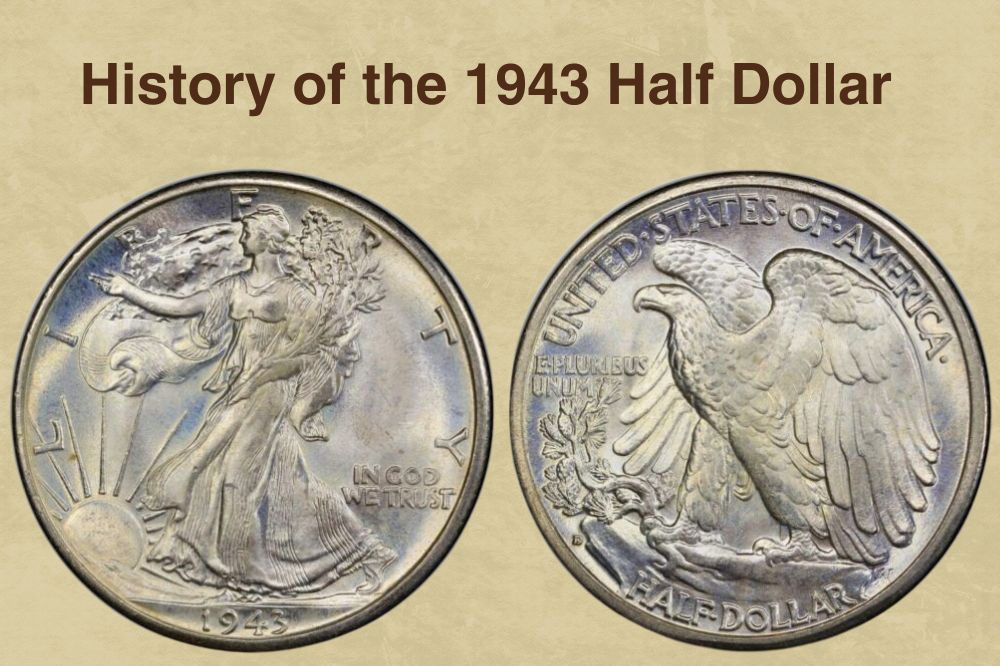
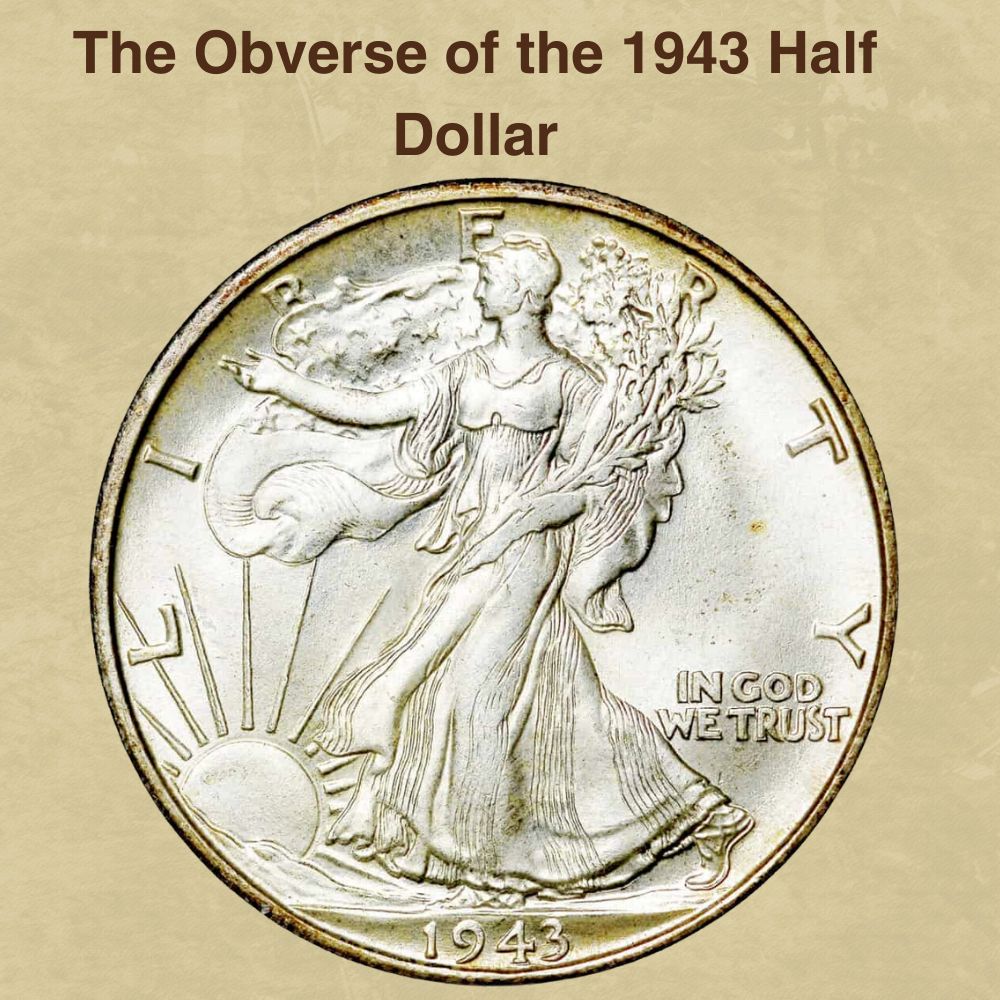
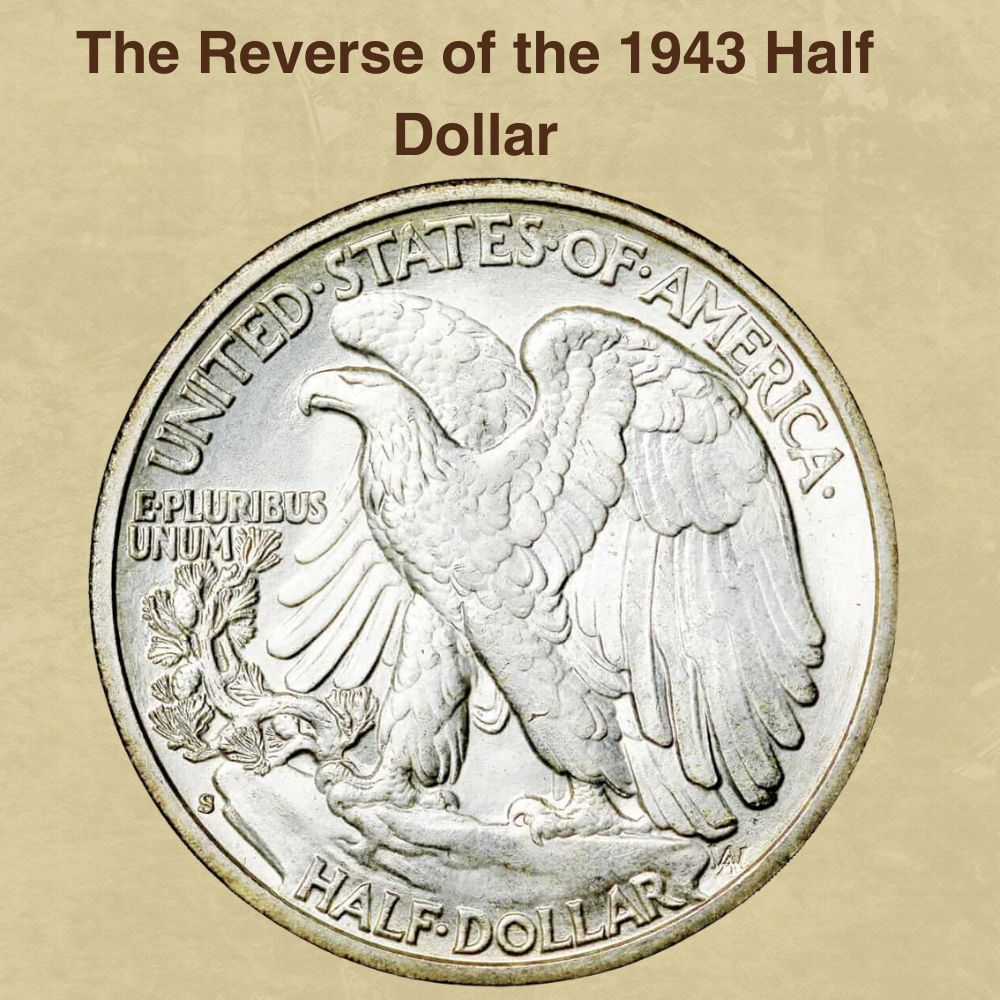
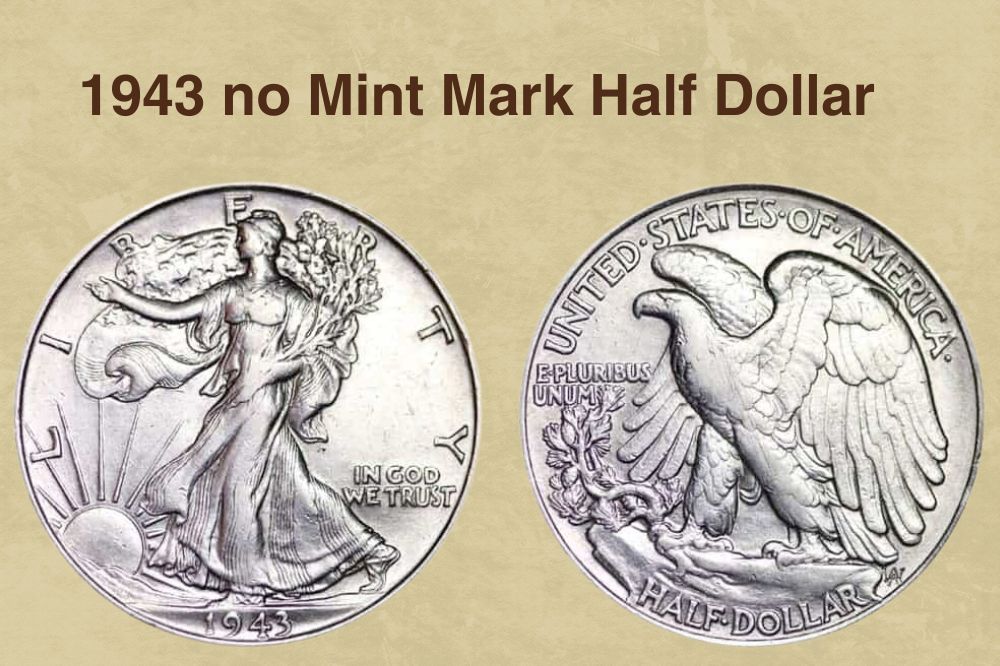
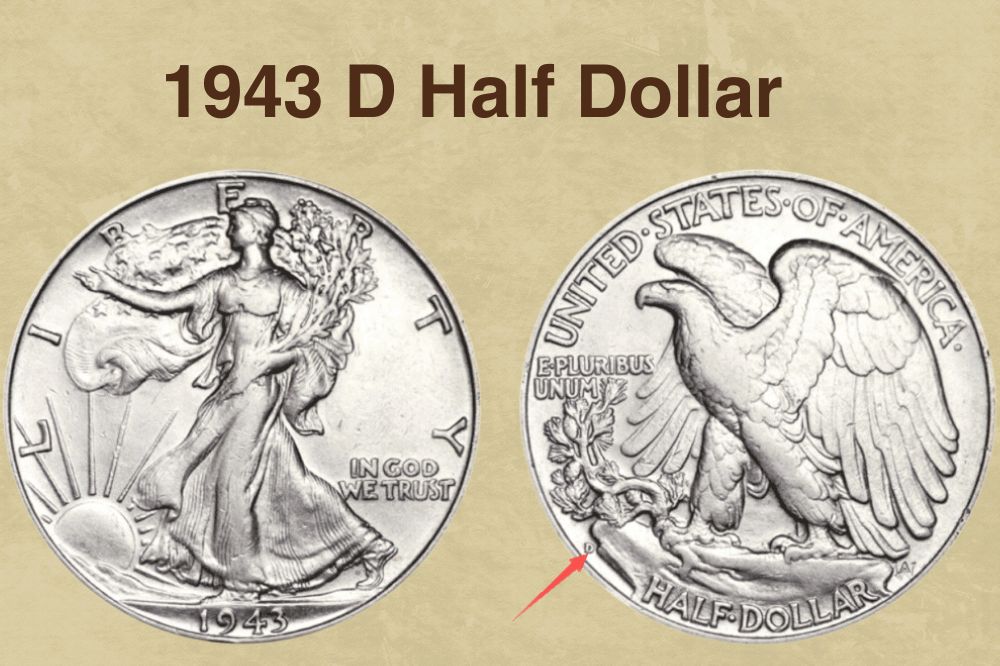
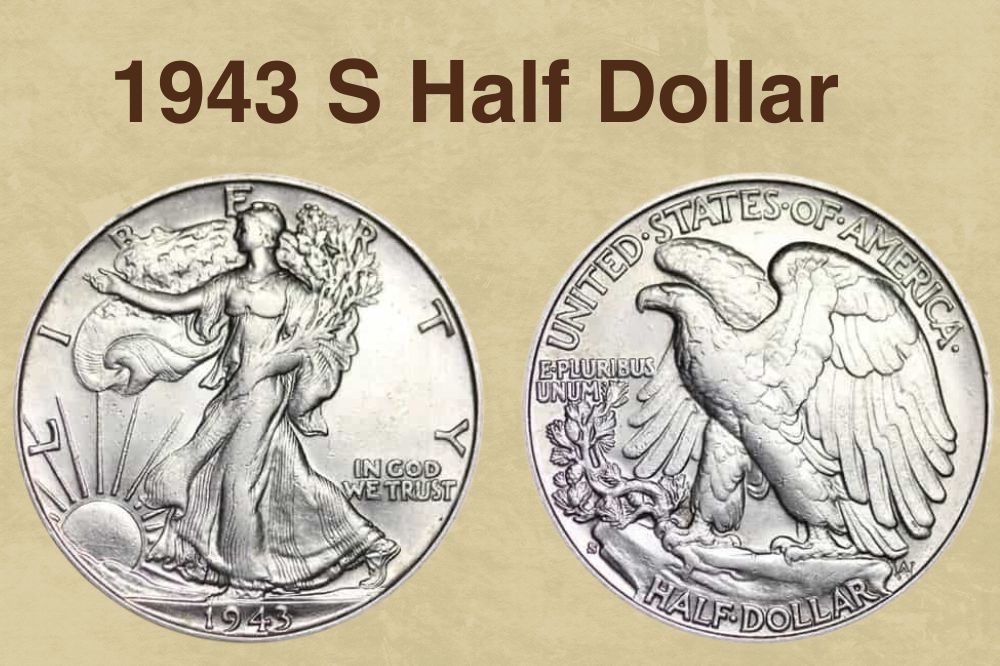
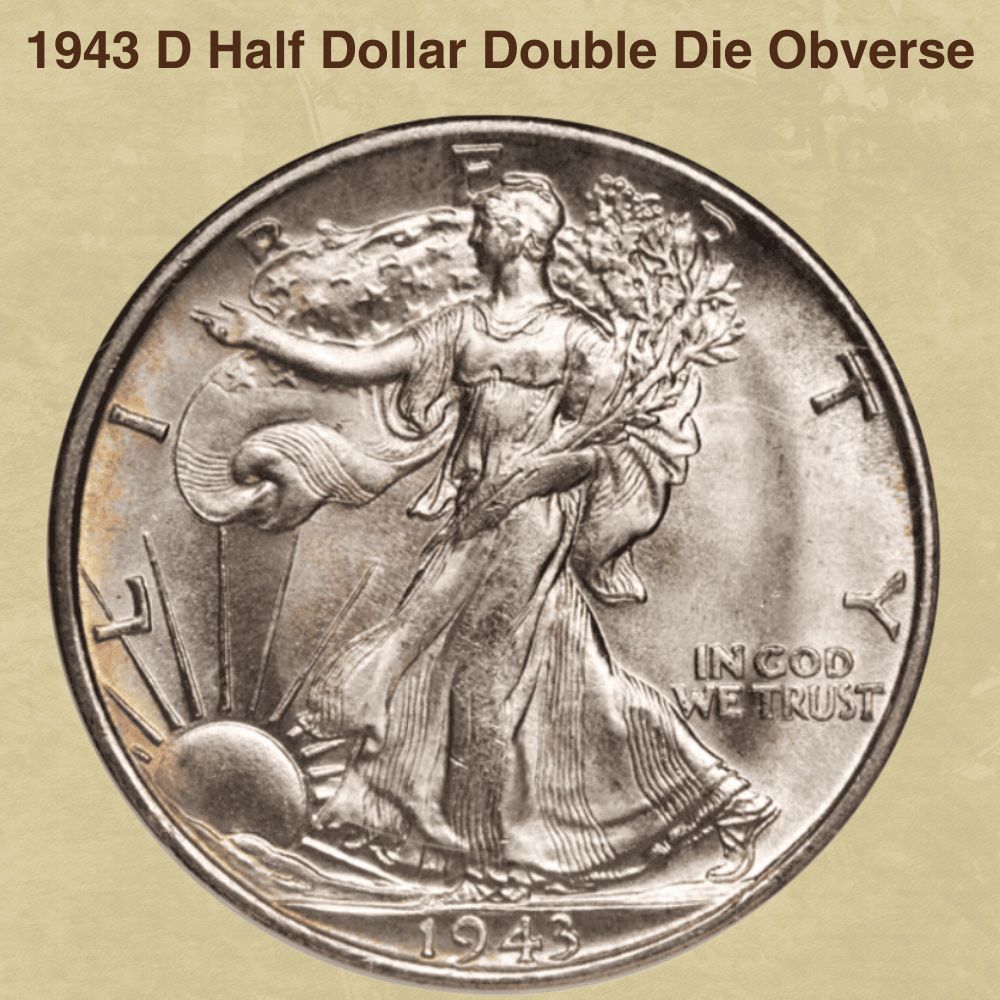
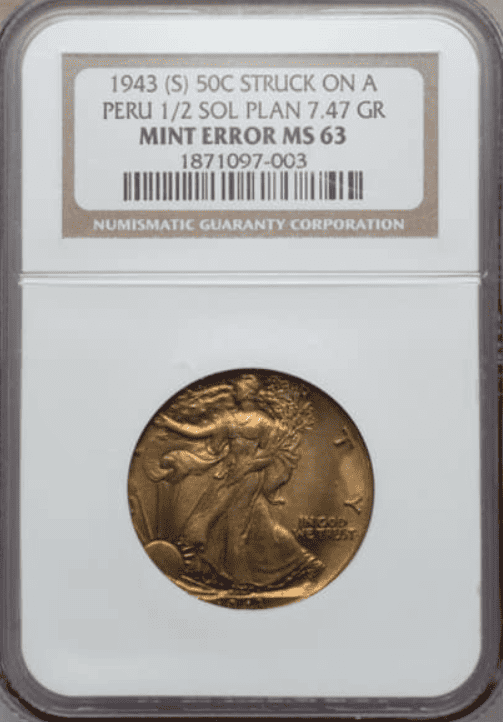
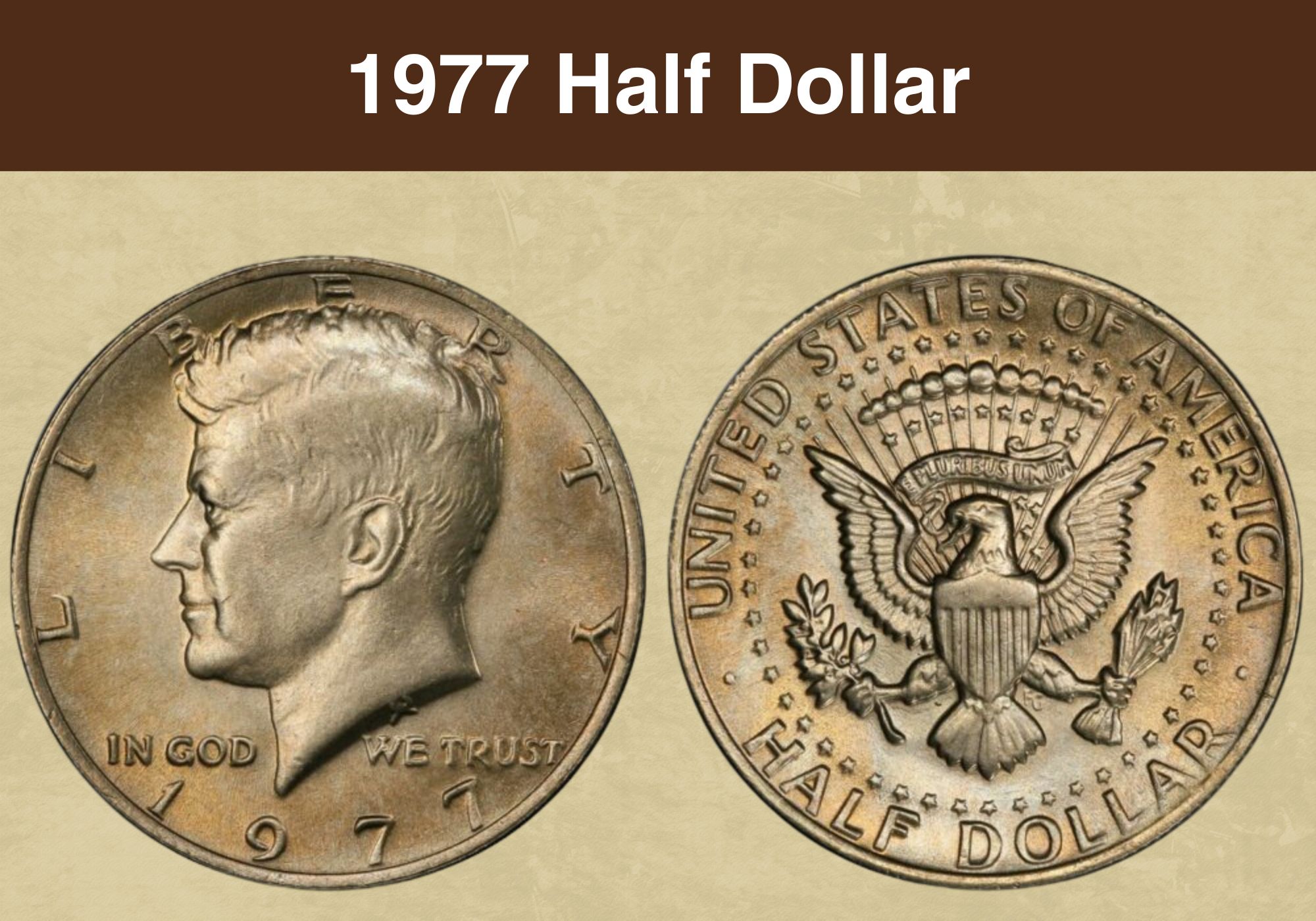
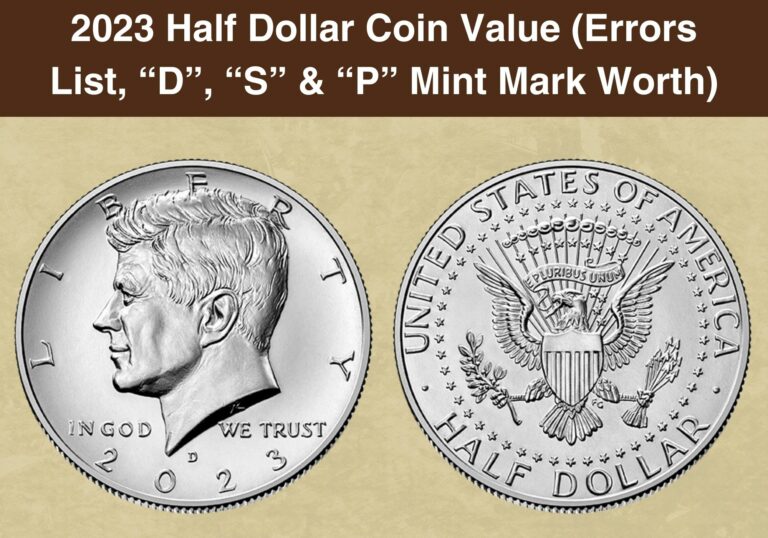
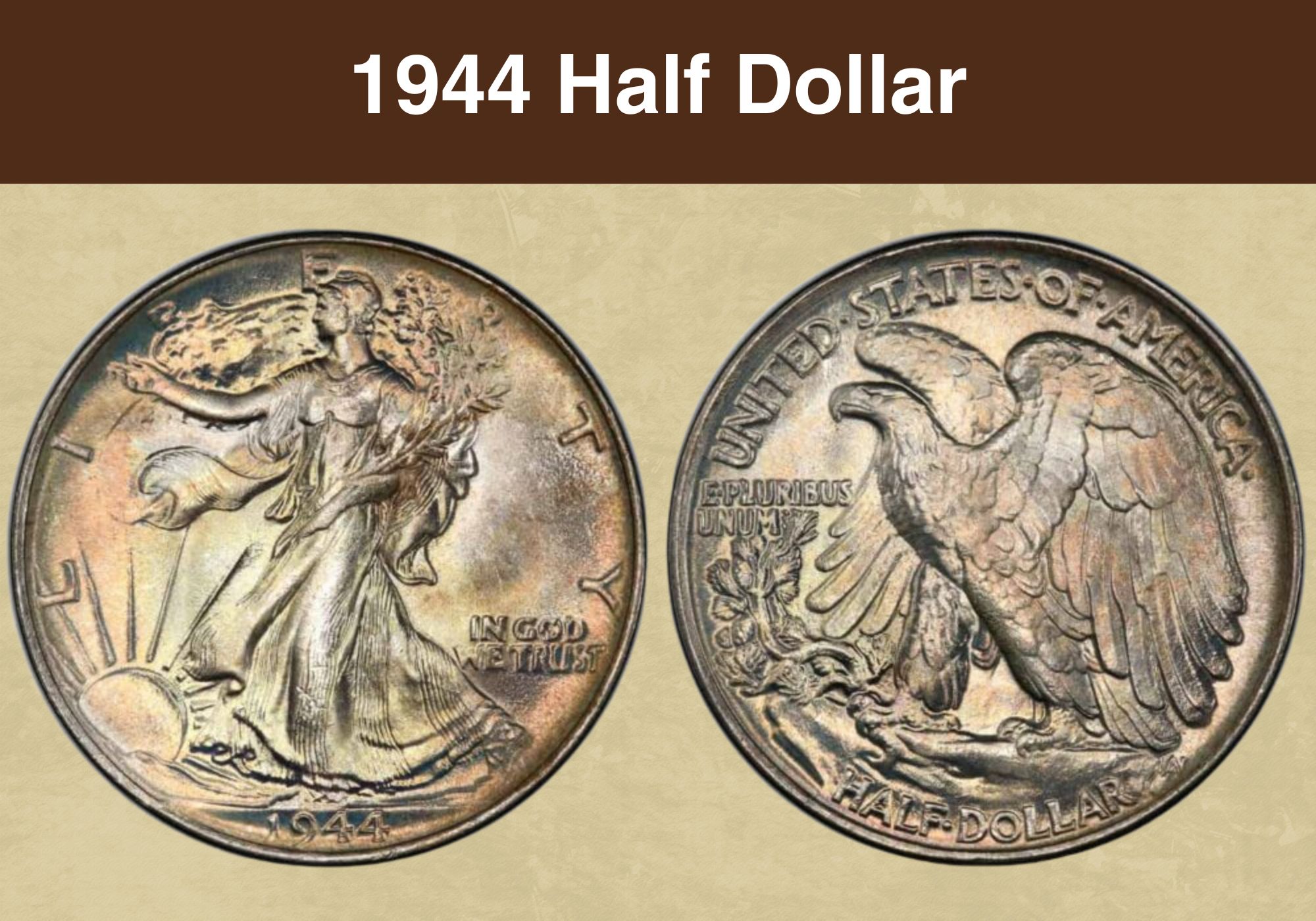
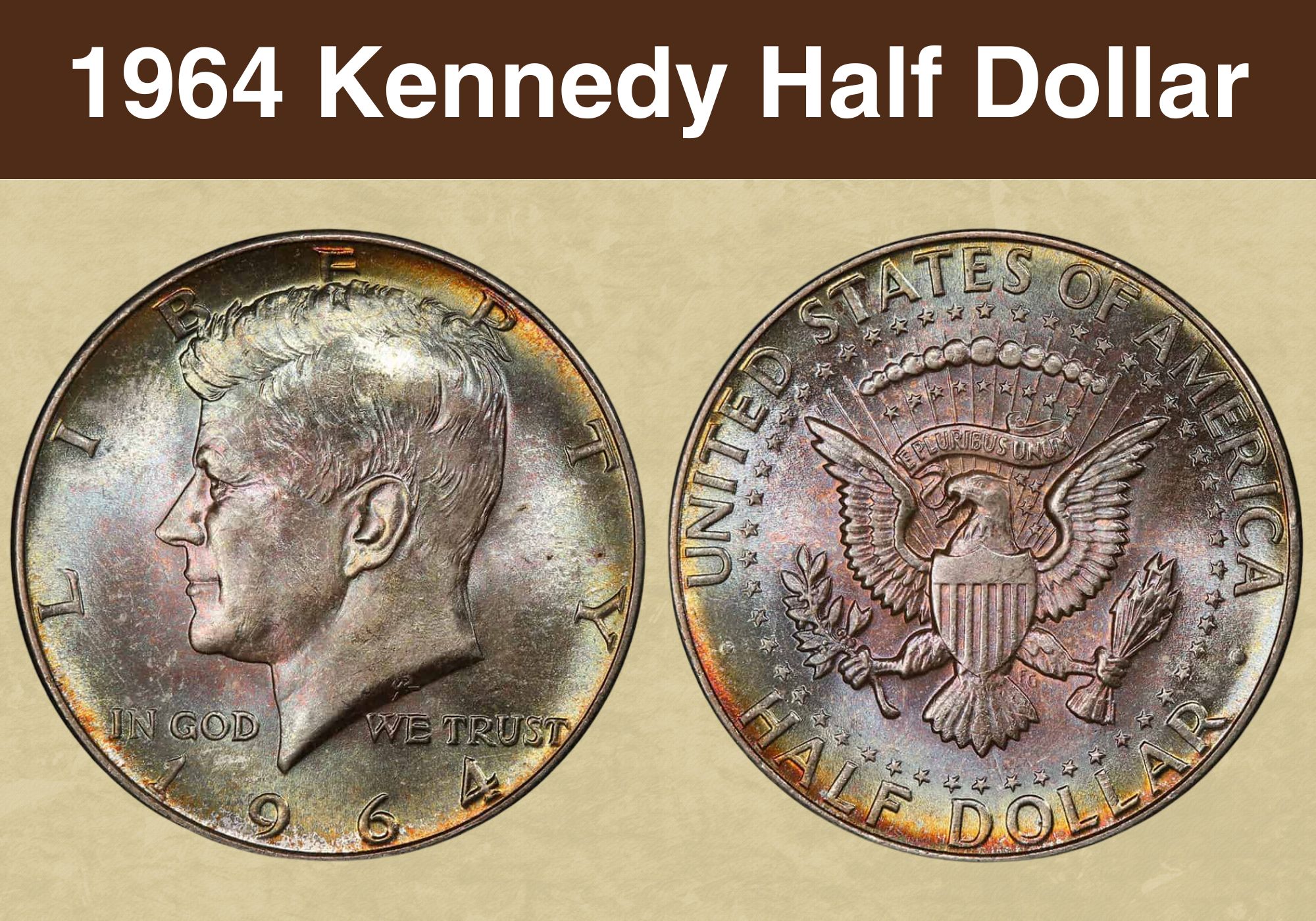
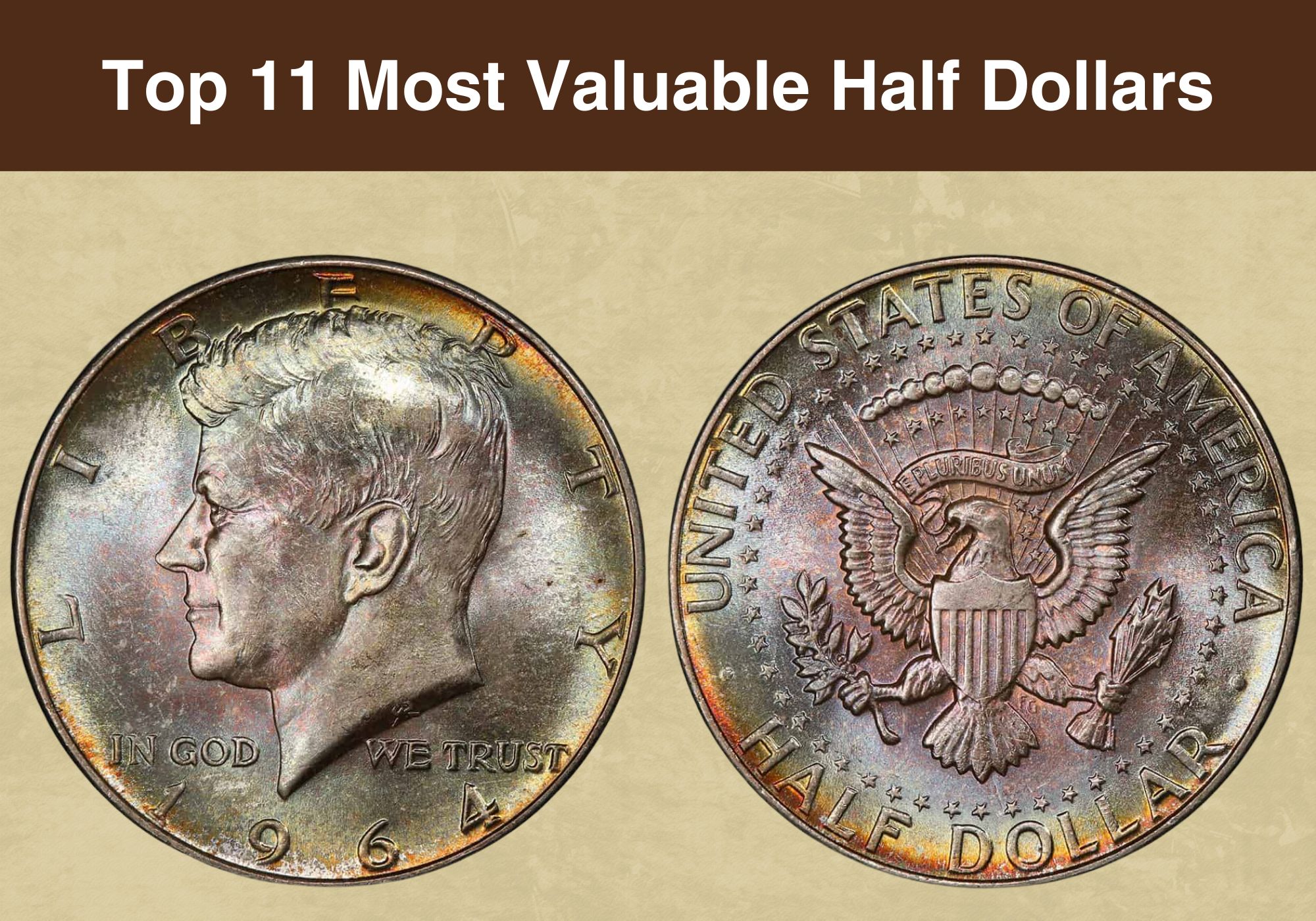
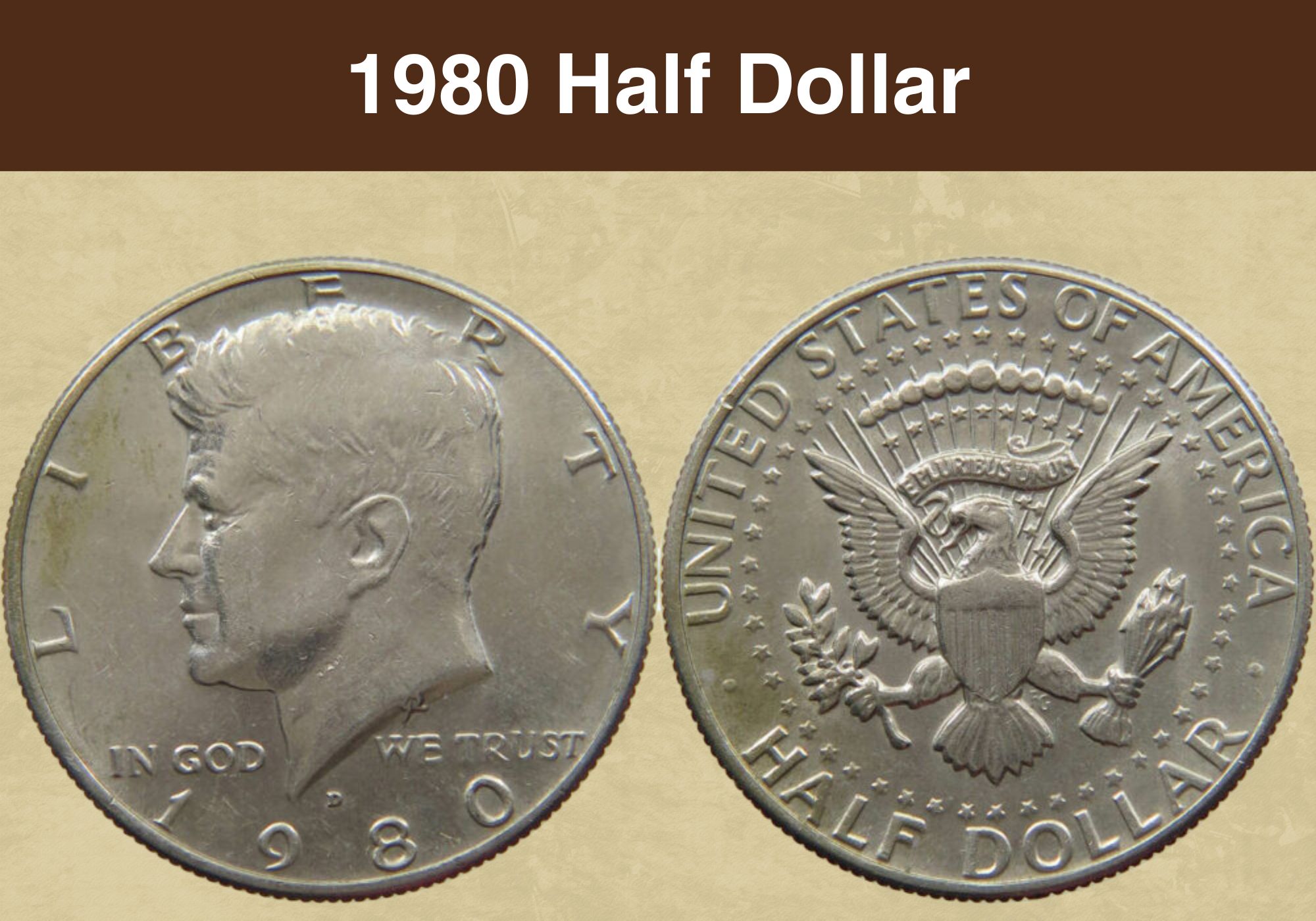
Thank you for this! I located Mr. Weinman’s initials prior to reading this and I thought to myself…”Oh! What is this?!”